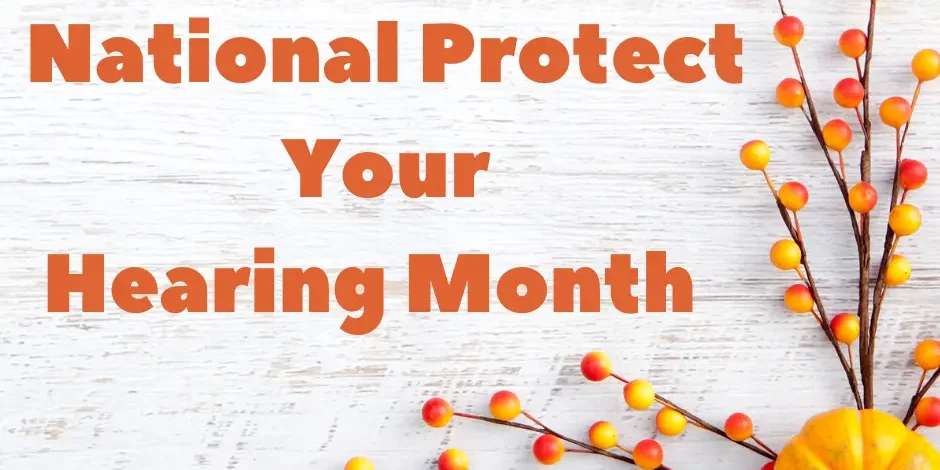A Guide for National Protect Your Hearing Month

Recognized annually in October, National Protect Your Hearing Month is an initiative from the National Institute on Deafness and Other Communication Disorders and the Centers for Disease Control. This vital event amplifies the importance of safeguarding your hearing and encourages early detection of hearing issues. With almost 29 million Americans benefiting from hearing aids, understanding the best hearing safety tips is crucial for long-term well-being.
Why Hearing Safety Matters
Hearing loss has implications that extend beyond simple auditory deficits. Research reveals a direct link between untreated hearing loss and an elevated risk of developing dementia. One study by the Lancet Commission identifies hearing impairment as a significant mid-life risk factor for cognitive decline. Additionally, untreated hearing loss can contribute to physical harm; Johns Hopkins University found that individuals with untreated hearing loss face a three-fold increase in the likelihood of experiencing falls.
Given these broader health implications, it’s clear that hearing safety should be a priority in overall wellness. Noise-induced hearing loss (NIHL), in particular, stands as the third most common chronic physical condition in the United States. It’s not just an issue for the aging population but affects people of all ages. This campaign aims to draw attention to the gravity of NIHL, urging everyone to educate themselves and adopt preventive measures to protect their hearing, thereby also mitigating other health risks.
Explore more about types of hearing loss.
Everyday Hearing Safety Tips
Your everyday activities could pose risks to your hearing health. Here are ways to protect your hearing in various settings:
Ways To Protect Your Hearing At Home:
Control Volume: Limit TV or music volume to 60% of maximum capacity.
Take Listening Breaks: Periodically pause loud podcasts or music to give your ears a rest.
Select Quiet Products: Use less noisy household tools, guided by the CDC’s Buy Quiet webpage.
Use Hearing Protection: Use earmuffs or earplugs when engaging in loud activities, like operating power tools.
Hearing Safety Outdoors and On the Go:
Headphone Caution: Limit headphone usage and choose noise-canceling models.
Safe Commuting: Keep vehicle music at moderate levels. If you can’t hear external noises, lower the volume.
Hearing Safety Tips At Events:
Noise Breaks: Take short intervals away from the noise at loud gatherings.
Pay Attention to Warnings: Follow signage or announcements advising hearing protection.
Carry Portable Protection: Keep earplugs handy in your car or bag.
Outdoor and Recreational Hearing Safety Tips:
Wear Protection: Use earmuffs or earplugs during noisy activities like motorcycling.
Gym Precautions: Position yourself away from loudspeakers in fitness classes.

Protect Your Hearing: Gauge Dangerous Noise Levels
Grasping the concept of sound intensity is crucial for effective hearing protection. Noise levels become hazardous starting at 85 decibels (dB), posing risks for gradual hearing damage. When sound levels exceed 120 dB, the risk of immediate hearing harm significantly increases. A practical way to gauge whether you’re in a potentially damaging noise environment is the need to shout for effective communication. Raising your voice to be heard at arm’s length is a strong indicator that the ambient noise is dangerously high.
Get more hearing health questions answered.

Ways To Protect Your Hearing: Hearing Protection Gear
When it comes to safeguarding your hearing in noisy environments, having the proper protection gear is critical. The three main types of hearing protectors include earplugs, earmuffs, and canal caps. Earplugs come in different forms like foam, pre-molded, or custom-fit, offering a range of noise reduction options. Earmuffs are padded cups connected by an adjustable headband, usually offering higher noise reduction but may be bulkier. Canal caps, which are earplugs on a stiff band, offer the ease of quick removal and reinsertion but may provide less noise reduction.
One key factor to consider when choosing a protector is the Noise Reduction Rating (NRR). This lab-tested rating indicates how effectively the device reduces ambient noise. The higher the NRR, the greater the noise reduction, but be aware that higher NRRs might also diminish your ability to hear important ambient sounds like alarms or warnings.
If you’re still determining which type of hearing protector best suits your needs, consult a hearing health professional. They can provide personalized recommendations based on your specific noise environment and hearing health.
Make Hearing Safety a Year-round Concern
National Protect Your Hearing Month is an essential reminder, but hearing safety should be a year-round priority. Schedule a free hearing screening at Stanford Hearing to assess your hearing health. Don’t wait; your hearing is invaluable.
